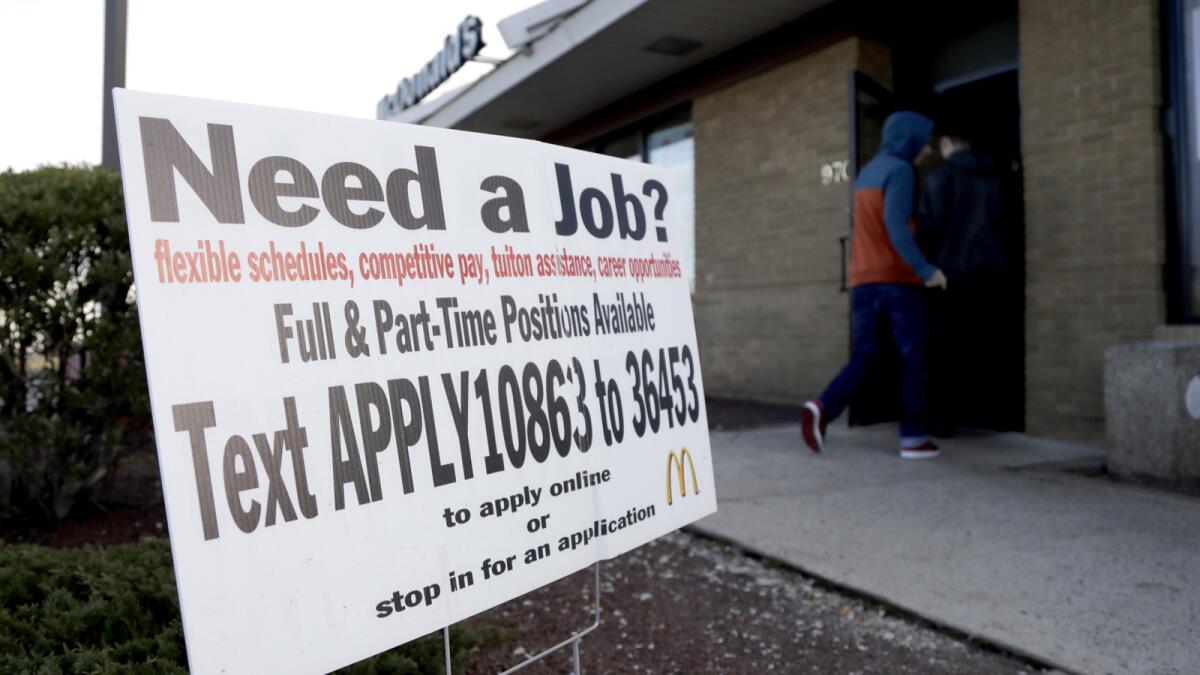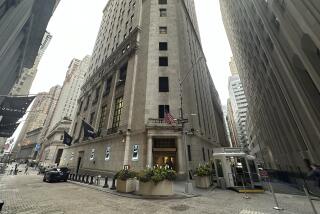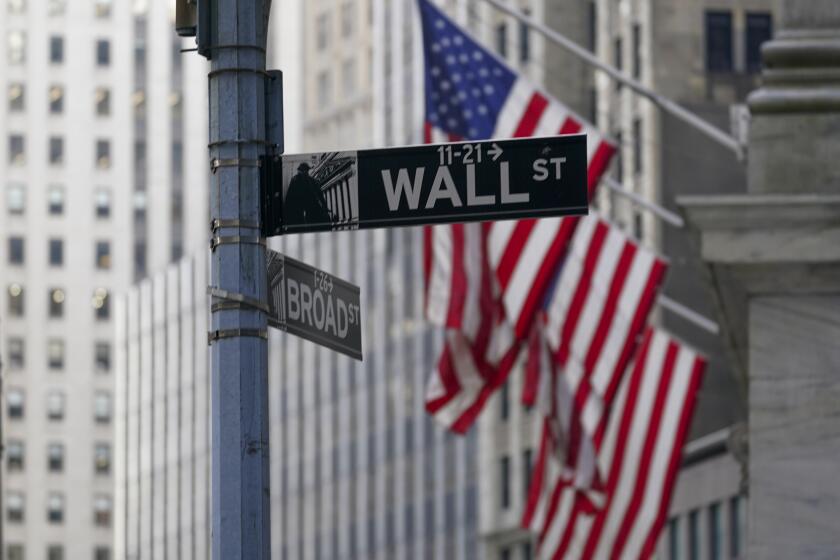Strong year for hiring: U.S. employers add 312,000 jobs in December, smashing expectations

The U.S. economy expanded by 312,000 jobs in December, smashing expectations for year-end growth, and the unemployment rate crept up to 3.9%, the highest level since July, federal economists reported Friday.
Wages grew 3.2% in the year since December 2017 after nearly a decade of tepid growth, the Labor Department’s latest numbers showed.
The slightly higher jobless rate shouldn’t ring alarm bells, said Joseph Brusuelas, chief economist at RSM, an international consulting firm. The rate ticked up because some 400,000 more people were looking for work last month.
“You’re bringing people back into the labor force,” he said. “That’s a good thing.”
Altogether, 2018 was the best year for job creation since 2015. The economy expanded by 2.6 million jobs, and the year ended with a slightly higher labor participation rate: 63.1% of Americans were working or looking for jobs in December, up from November’s 62.9%.
The December numbers follow a year of steady growth across industries — particularly manufacturing, which had its biggest boost in about a decade. There were some exceptions, including retail and food services. And economists caution that the pace of hiring overall is expected to slow in 2019.
At this stage of the nine-year recovery, maintaining the streak that took off in 2014 is projected to become increasingly difficult. Trade tensions with China and other countries could accelerate this slowdown, since President Trump’s tariffs are raising the cost of doing business worldwide.
Those uncertainties are already playing out in the volatile stock market, but so far, the U.S. labor market has remained robust.
Manufacturing, healthcare, retail and construction led December’s growth.
The Bureau of Labor Statistics also amended reports for the previous two months to show that more jobs were added — a reasonable move after last year’s hurricanes scrambled the numbers, analysts said. November’s figure was revised up to a net increase of 176,000 jobs from 155,000, while October’s gains grew to 274,000 from 237,000.
Last year started with an unemployment rate of 4.1%. The jobless rate dropped to 3.7% in September, the lowest since 1969.
Manufacturing experienced a major rebound, producing a net 249,000 new jobs in 2018 through November. That’s the biggest annual upswing since the Great Recession and well above 2017’s 207,000 jobs.
Manufacturing combined with a surging oil and gas sector and steady growth in construction jobs to produce what looks to be the best year for blue-collar, goods-producing jobs since 2014.
It’s not clear if that boom will continue. Crude oil prices have fallen for the last three months.
“We’re seeing two different economic realities right now,” said Martha Gimbel, research director for the Hiring Lab at Indeed, an employment website. “One is the stock market, which is going through something, and the other is the labor market, which has been chugging along.”
The typical worker’s year-over-year earnings grew 3.1% in October — the biggest jump since 2009. Wage growth held to that pace in November, according to the Bureau of Labor Statistics. But inflation ticked up in 2018, offsetting some of that bump.
If monthly job gains start shrinking this year, people shouldn’t panic, Gimbel said. Since 2010, 1 in 10 months has seen payrolls grow by fewer than 100,000 jobs.
The economy needs to expand by 80,000 jobs a month just to maintain current employment levels.
Trade tensions, however, will take a bite out of this year’s progress, he said, if Trump and Chinese leader Xi Jinping don’t reach a deal by their self-imposed March deadline.
“You’re going to see a slowdown in business investment and hiring, especially by large firms,” said Brusuelas, the RSM economist. “The large multinational firms derive roughly half of their revenues from the global sector.”
Apple pointed to the trade war Wednesday when it lowered its quarterly sales estimates for the first time in 15 years. Chief Executive Tim Cook blamed tariffs and China’s slowing economy.
Job growth has also slowed considerably in the lower-paying service sector in the first two years of the Trump presidency. The enormous retail trade industry, in particular, has suffered. Growth in federal, state and local government jobs, which had been picking up pace, tapered off.
Overall, however, 2018 was a year that shifted more power to workers, said Josh Wright, chief economist at iCIMS, a hiring software firm.
As competition for employees intensified, companies expanded their search for hires. Workers who have struggled with disproportionately high joblessness found more opportunities.
Black Americans started the year with an unemployment rate of 7.7%; by November, that figure had dropped to 5.9%. The jobless rate for Latinos fell from 5% to 4.5%.
“Employers were stretching to meet new people and invest in people,” Wright said. “There’s a lot to cheer for.”
Paquette and Van Dam write for the Washington Post.
More to Read
Inside the business of entertainment
The Wide Shot brings you news, analysis and insights on everything from streaming wars to production — and what it all means for the future.
You may occasionally receive promotional content from the Los Angeles Times.










